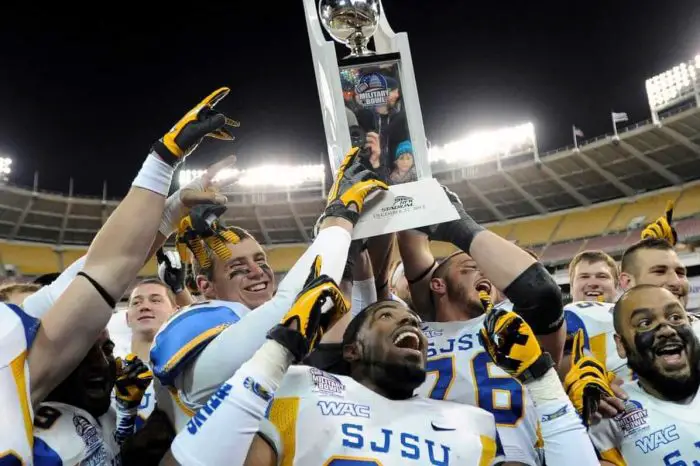Learn about the Bowl Championship Series system creation history and idea before it was replaced by the College Football Playoff in 2014.
College football was the outlier for NCAA-sponsored sports for a long time. When the College of New Jersey lost to Rutgers 6-4 in the first college football playoff game in 1869, there was no major effort to crown a national champion. Unlike NFL stats, where the league formalized a championship game early in its history, the people involved with college football left it up to designated observers — primarily the media — to choose the nation’s best.
The NCAA didn’t sponsor a championship game at the FCS level until the formation of the Bowl Championship System in 1998. The sport switched to a four-team playoff in 2014. But with talk of more expansion in the shadow of another playoff dominated by the SEC, it is worth observing how we got to this point.
Related article: Will 2022 be a better year for sports?
Ties, ties, and more ties
Split titles between the AP and coach’s poll were relatively rare. However, in the early 1990s, college football ended up getting stuck with them in consecutive years. In 1990, Colorado was crowned champion by the AP, and Georgia Tech was the coaches’ choice. The Buffaloes selection was especially controversial as they only beat a 4-7 Missouri team when they were unknowingly awarded a fifth down at the end of a game. Colorado, which finished 11-1-1, scored the winning touchdown on that play.
In 1991, both the Washington Huskies and Miami Hurricanes finished the year 12-0 and split the title. The NCAA could not pair the two up in a bowl to decide the title because Washington had to play in the Rose Bowl. The Huskies, who won the PAC-10 that season, were contractually obligated to play in the game.
Bowl Coalition (1992-94)
The people involved with college football attempted to find a way to settle who was No. 1 by creating the Bowl Coalition, which was to help champions of the conference be paired in the best bowl games and force the No. 1 and No. 2 teams to play each other. Sounds great in theory, but a few participants were left out of the agreement, namely, the PAC-10, Big Ten, and Rose Bowl.
The Bowl Coalition was able to get the national championship matchup in its first two seasons, but the third season was held back by the agreement. Penn State went undefeated and won the Big Ten in 1994 but was obligated to play in the Rose Bowl. The Nittany Lions crushed Oregon, but No. 1 Nebraska won the Orange Bowl and was chosen as champions instead.
Bowl Alliance: second verse, same as the first
The Bowl Alliance once again saw an agreement between the Sugar, Orange, and Fiesta Bowls with trying to match up the No. 1 and 2 teams in college football. But once again, the Big Ten would be left out.
On the national championship front, this system actually produced fewer No. 1 vs. No. 2 matchups than the previous system. Nebraska and Florida met as the top two teams in the 1996 Fiesta Bowl. The next season, No. 2 Arizona State couldn’t participate due to its Rose Bowl obligation. However, the 1997 national championship would be split between Nebraska and Michigan, who couldn’t play the Cornhuskers due to their obligation to the Rose Bowl.
Let’s get the math right guys

With the Rose Bowl onboard, the Bowl Championship Series kicked off in 1998. The Big Ten and Pac 12 were available to participate in the championship game, with the championship game itself rotating between the major bowls. A computer formula, with its own numbers in addition to the media polls, would help determine the two teams that would play.
The BCS, however, didn’t cut down on griping about the selection process. In the 2000-01 season, one-loss Florida State was chosen to play Oklahoma despite losing to one-loss Miami, which was ranked No. 2 in both polls during the regular season. The next year, Nebraska was picked to play Miami despite getting blasted 62-36 by Colorado and not winning the Big 12.
The kicker, however, was during the 2003-04 season. Three conference champions — Oklahoma, LSU, and USC — finished with one loss. USC was No. 1 in the polls, but the computer rating weakened their number, and they were left out. LSU beat Oklahoma in the title game, but the AP poll rebelled, selecting the Trojans as champions. The BCS had become a victim of the nature of college football. It tried to try a solo champion, but people created a split.
You may also like to read our latest article, What makes poker an online casino favorite?



